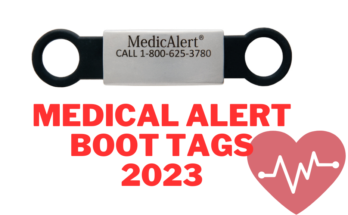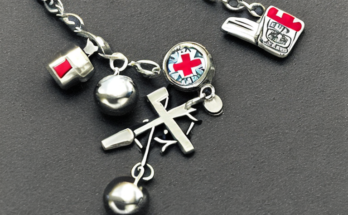Medical alert systems, also known as personal emergency response systems (PERS), have become an essential tool for seniors to maintain their independence and safety. These systems provide a fast and reliable way to summon help during emergencies, whether it’s a medical issue, a fall, a fire, or any other situation requiring immediate assistance. With a simple press of a button, seniors can connect with a monitoring center that can assess their situation and contact emergency services if necessary.
In this comprehensive guide, we will explore the different types of medical alert systems available, their features, costs, and how they work. We will draw insights from various reputable sources, including articles from Bay Alarm Medical, The Senior List, and Medical Alert Buyers Guide.
Understanding Medical Alert Systems
Medical alert systems are designed to provide seniors with a sense of security and confidence, knowing that help is just a button press away. These systems consist of a base unit or a wearable device, typically a pendant or a wristband, and a monitoring center that is staffed by trained professionals available 24/7.
In-Home Medical Alert Systems
In-home medical alert systems are designed for seniors who spend a significant amount of time at home. These systems can be categorized into two types: landline-based and cellular-based.
Landline-Based Systems
Landline-based systems require a working landline connection to establish a communication link with the monitoring center. They are easy to install and often the most affordable option. The base unit is connected to the landline, and a portable help button, worn as a pendant or wristband, allows the user to call for help within the range of the base unit.
Cellular-Based Systems
Cellular-based systems, on the other hand, do not require a landline connection. They utilize cellular networks to establish a communication link with the monitoring center. These systems offer more flexibility as they can be used anywhere within cellular coverage. The base unit and portable help button function similarly to landline-based systems, providing immediate access to assistance.
Mobile Medical Alert Systems
Mobile medical alert systems are designed for seniors who are on the go and require protection outside of their homes. These systems use cellular technology and GPS tracking to provide precise location information in case of an emergency. The wearable device, typically a pendant or a smartwatch, allows the user to call for help from anywhere at any time.
Medical Alert Smartwatches
Medical alert smartwatches are a recent addition to the medical alert system market. These sleek and discreet devices offer a combination of safety and functionality. In addition to emergency call buttons, they often include features such as activity tracking, medication reminders, and messaging capabilities. Medical alert smartwatches are particularly suitable for seniors who prefer a wearable device that resembles a traditional watch.
Factors Affecting the Cost of Medical Alert Systems
When considering a medical alert system, it’s important to understand the various factors that contribute to the overall cost. These factors include monthly fees, equipment fees, add-on services, and any hidden fees that may be associated with the system.
Monthly Fees
The monthly fee is a recurring cost that covers the monitoring service provided by the medical alert system provider. The type of system you choose, whether it’s an at-home system, an on-the-go system, or a bundled system, will determine the monthly fee. At-home systems tend to be the least expensive, with monthly prices ranging from $20 to $30. On-the-go systems are slightly higher, typically ranging from $30 to $40. Bundled systems, which combine both at-home and on-the-go devices, are the most expensive, often exceeding $40 per month.
It’s important to note that some medical alert systems offer the option of no monthly fee, also known as unmonitored systems. These systems do not connect to a monitoring center but instead directly dial 911 or personal contacts in case of an emergency. However, it is generally not recommended to rely solely on unmonitored systems due to potential safety concerns and limitations.
Equipment Fees
Medical alert systems can either be rented or purchased outright. If you choose to rent the equipment, the cost will be included in your monthly fee, and you will need to return the equipment upon ending your subscription. If you prefer to purchase the equipment, you will pay an upfront equipment fee. Higher-tech devices, such as smartwatches or tablets, may come with an additional cost. However, purchasing the equipment means you will own it even if you cancel your subscription.
Add-On Services
Many medical alert system providers offer optional add-on services that come with an additional cost. One popular add-on service is fall detection, which automatically senses when a user falls and alerts the monitoring center. Other add-ons may include medication reminders, activity tracking, or additional emergency buttons for multiple locations within the home. The cost of add-on services typically ranges from $3 to $10 per month.
Hidden Fees
Hidden fees, such as activation, initiation, processing, or membership fees, are additional charges that some medical alert system providers may impose. However, top providers usually do not have these hidden fees. To ensure transparency, it’s best to contact the customer service representative of the chosen provider and inquire about any potential hidden fees before making a purchase.
Choosing the Right Medical Alert System for You
Selecting the right medical alert system can be overwhelming due to the variety of options available. To help you make an informed decision, consider the following factors:
Lifestyle and Needs Assessment
Evaluate your lifestyle and specific needs to determine the most suitable type of medical alert system. If you spend a significant amount of time at home, an in-home system may be the best option. If you are frequently on the go, a mobile system with GPS tracking capabilities would be more suitable. Consider factors such as range, battery life, water resistance, and additional features that align with your lifestyle.
Monitoring Center Quality
The quality of the monitoring center is crucial for the effectiveness of a medical alert system. Ensure that the provider you choose has a well-established monitoring center staffed by trained professionals who can respond promptly and appropriately during emergencies. Look for certifications and accreditations that demonstrate the provider’s commitment to quality and reliability.
Customer Reviews and Reputation
Research customer reviews and ratings of different medical alert system providers to gain insights into their reputation and customer satisfaction. Look for providers with positive reviews regarding response times, customer support, and overall user experience. Additionally, consider the provider’s longevity and track record in the industry.
Cost and Value
Consider the overall cost of the medical alert system, including monthly fees, equipment fees, and any add-on services. Compare the prices and features offered by different providers to ensure you are getting the best value for your money. Remember to balance cost with the reliability and quality of the system, as the primary purpose is to ensure your safety and well-being.
Additional Features and Services
Some medical alert systems offer additional features and services that may be beneficial for your specific needs. These can include medication reminders, caregiver apps, home automation integration, or access to healthcare professionals for medical advice. Evaluate these additional features and determine whether they align with your requirements.
User-Friendly Interface
Consider the ease of use and user-friendly interface of the medical alert system. The buttons should be easily accessible, and the system should have clear instructions for operation. Look for features such as voice activation, large display panels, and intuitive mobile apps that enhance the user experience.
Conclusion
Medical alert systems provide seniors with the reassurance and peace of mind that help is readily available in case of an emergency. Whether it’s an in-home system, a mobile system, or a smartwatch, these devices offer a lifeline to immediate assistance. By understanding the different types of medical alert systems, their features, and the factors that influence their cost, seniors can make informed decisions to ensure their safety and well-being.
Remember to consider your lifestyle, needs, and preferences when choosing a medical alert system. Read customer reviews, assess the monitoring center’s quality, and compare costs and additional features to find the system that best suits your requirements. With a reliable medical alert system by your side, you can confidently enjoy your independence and stay connected to help whenever you need it.
Stay safe, stay protected, and embrace the freedom that comes with having a trusted companion in the form of a medical alert system.


